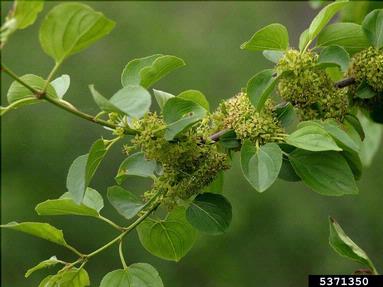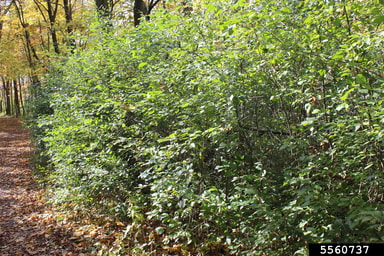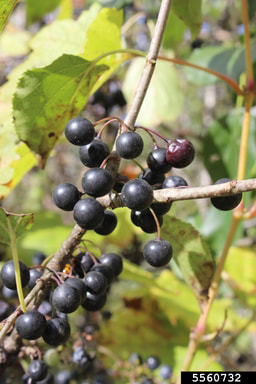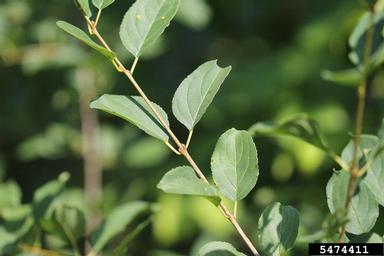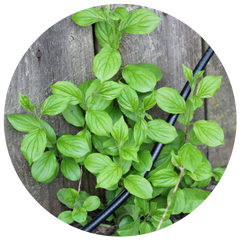|
Common Buckthorn
Rhamnus cathartica Common buckthorn was introduced to North America in the early nineteenth century as a shrub and small tree addition to landscapes. As with many other woody invasive ornamental species it was also encouraged as a planting for wildlife habitat and windbreaks/fencerows. Eventually its invasiveness was realized and now the use of the plant is highly discouraged if not prohibited, depending on where you are located.
Common buckthorn produces an incredible number of seeds and this allows it to spread rapidly. It grows larger and faster than many native species and will create a dense monoculture. While it is somewhat shade tolerant, buckthorn is primarily found along forest edges, along roadsides, and in old fields. This species of buckthorn can look very similar to glossy buckthorn. However, common buckthorn has spines/thorns (glossy does not) and leaf edges that are finely toothed. Photo Credits: Jan Samanek, Phytosanitary Administration, bugwood.org | Chris Evans, University of Illinois, bugwood.org | Rob Routledge, Sault College, bugwood.org | Sharon Yiesla, Morton Arboretum
Learn More About Common Buckthorn:
|
Common Buckthorn Facts
Management Options
|
|
Created by the Northwest Michigan Invasive Species Network
|
Go Beyond Beauty is funded by the Michigan Invasive Species Grant Program (MISGP)
|

